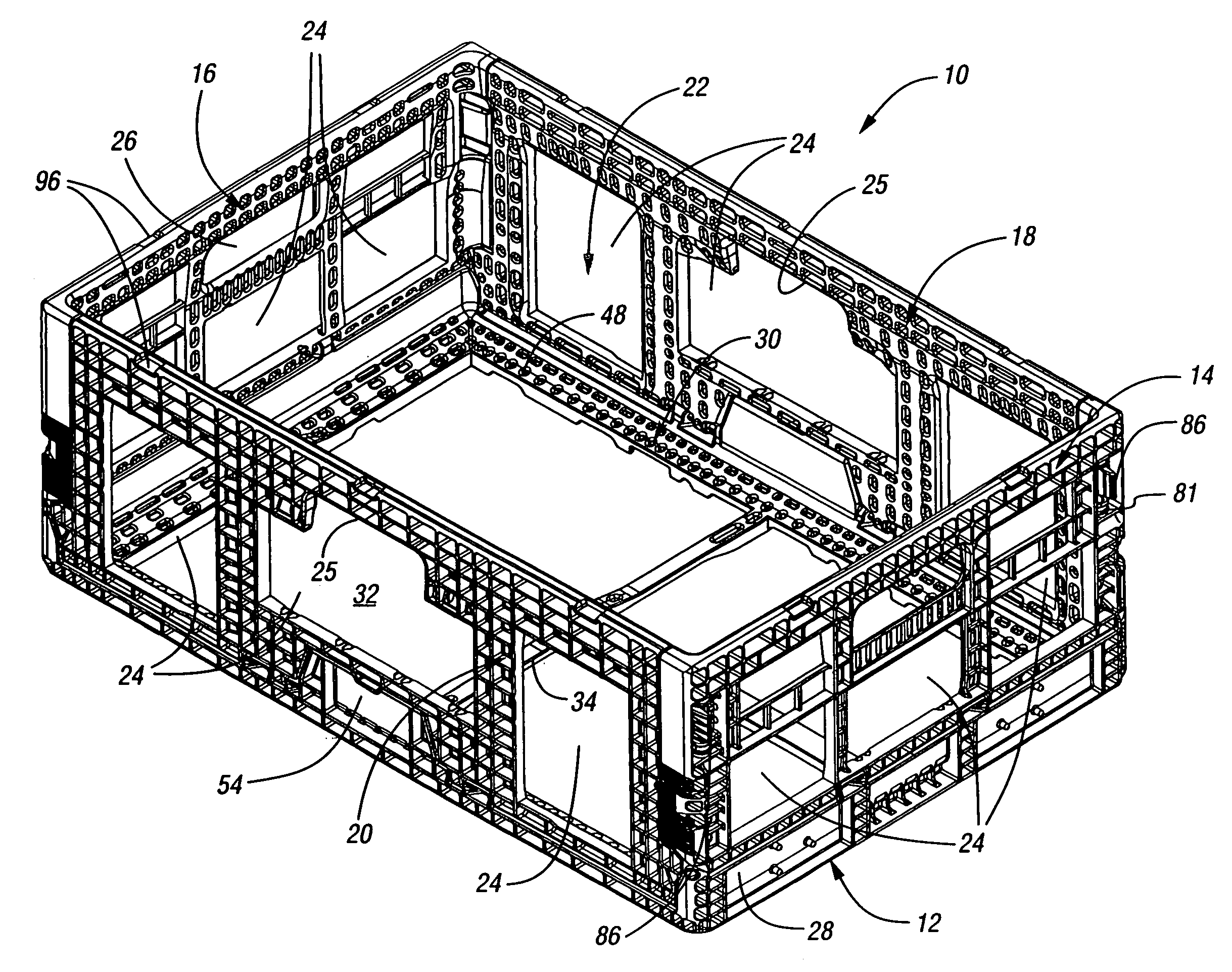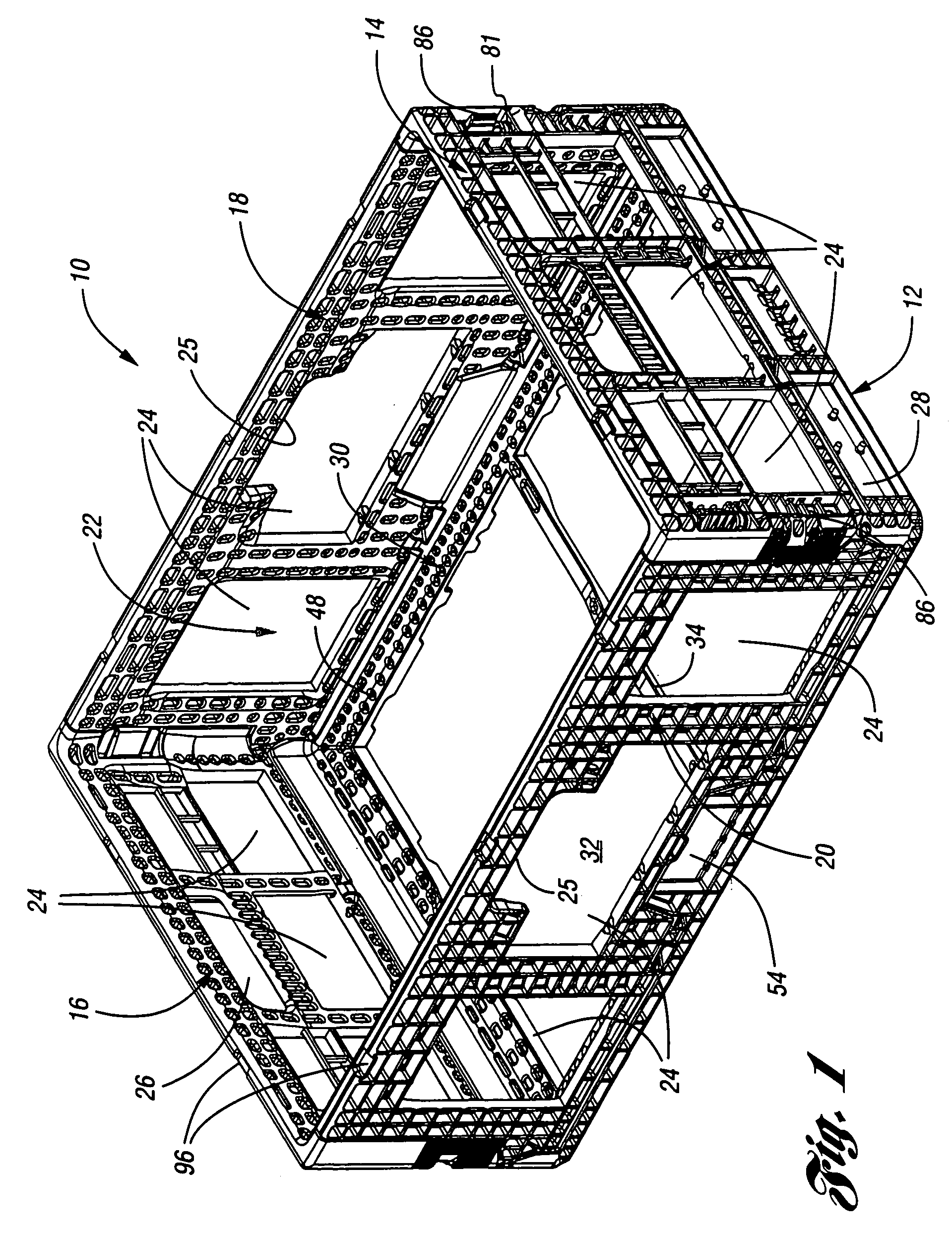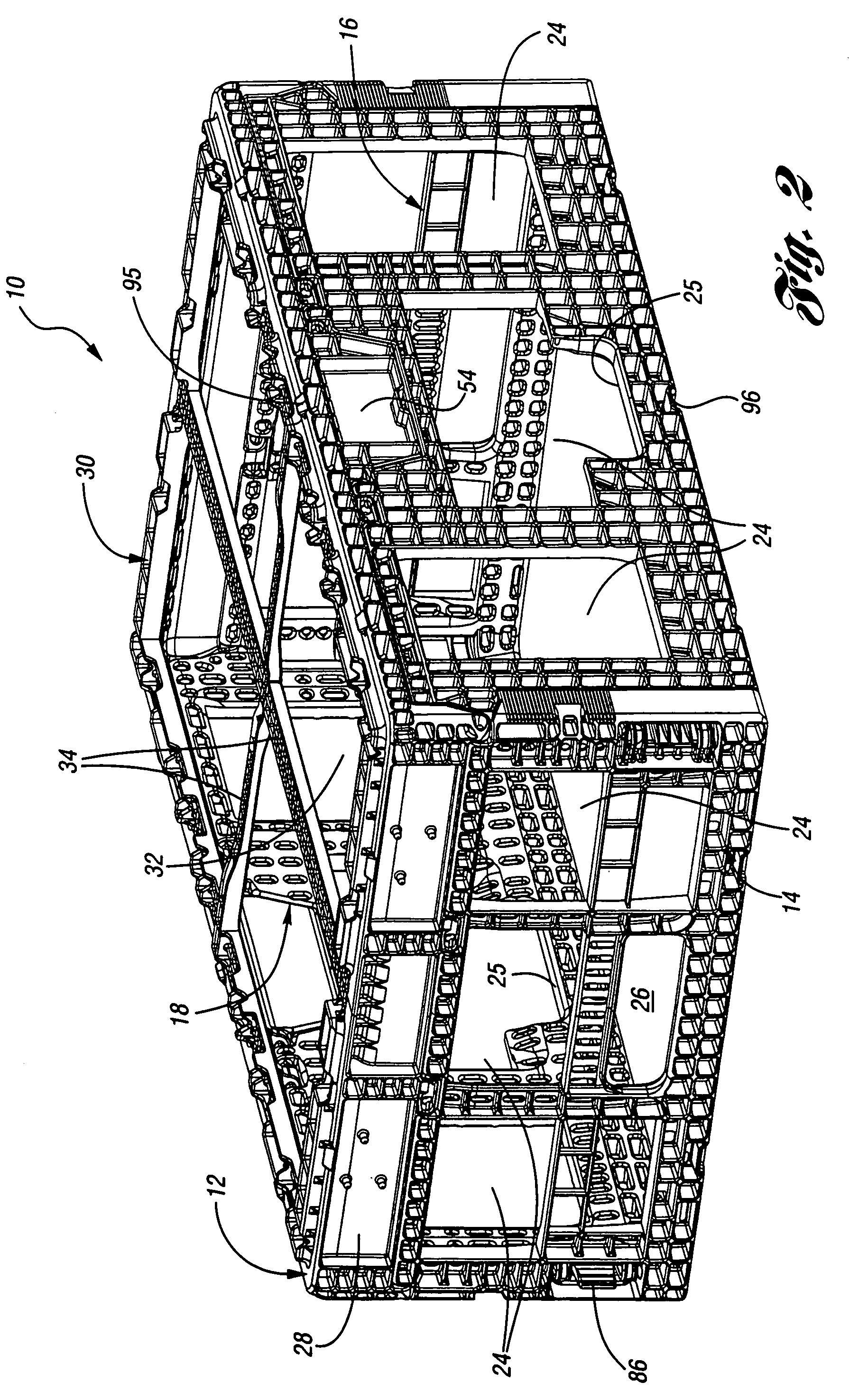Container
a container and container body technology, applied in the field of containers, can solve the problems of lack of structural strength and durability, deformation of cardboard containers, and difficulty in absorbing the top load force applied to the walls of cardboard containers, and achieve the effect of combining the strength and durability of reusable containers, cleanliness and convenien
- Summary
- Abstract
- Description
- Claims
- Application Information
AI Technical Summary
Benefits of technology
Problems solved by technology
Method used
Image
Examples
first embodiment
[0047]Referring first to FIGS. 1–14, a container according to the present invention is illustrated and indicated generally by reference numeral 10. Container 10 is adapted to receive an inner receptacle as described herein. Unlike prior art containers, container 10 of the present invention includes the only the minimum structure and material necessary to construct the container framework. In effect, the inner receptacle received within container 10 provides the remaining base and wall structure. Container 10 provides the top load strength and protection necessary during shipping and handling, while dirt and other foreign matter is removed and disposed of with the inner receptacle.
[0048]As shown in FIGS. 1–9, container 10 includes a base 12 for supporting a lower portion of the inner receptacle. A first pair of opposed walls 14, 16 extends upwardly from base 12, and a second pair of opposed walls 18, 20 extends upwardly from base 12 and is attached to the first pair of opposed walls ...
second embodiment
[0065]With reference to FIGS. 15–20, a container according to the present invention is illustrated which is substantially similar to container 10 except for an alternative base configuration. The reference numerals for FIGS. 15–20 correspond generally with the reference numerals for FIGS. 1–14 except for the addition of a “1” prefix. In this embodiment, and with reference to FIGS. 18–20, the base member of container 110 includes an exterior ring 197 and a lightweight support material 198 affixed thereacross. Lightweight support material can include, for example, such plastic materials as a flexible film, mesh, or netting or, alternatively, a paper material. It is further contemplated that support material 198 may alternatively be a more rigid plastic member, plexiglass, wood, or corrugated cardboard, without departing from the teachings according to the present invention. Advantageously, lightweight support material 198 provides shock absorption for protecting produce during transpo...
PUM
 Login to View More
Login to View More Abstract
Description
Claims
Application Information
 Login to View More
Login to View More - R&D
- Intellectual Property
- Life Sciences
- Materials
- Tech Scout
- Unparalleled Data Quality
- Higher Quality Content
- 60% Fewer Hallucinations
Browse by: Latest US Patents, China's latest patents, Technical Efficacy Thesaurus, Application Domain, Technology Topic, Popular Technical Reports.
© 2025 PatSnap. All rights reserved.Legal|Privacy policy|Modern Slavery Act Transparency Statement|Sitemap|About US| Contact US: help@patsnap.com



